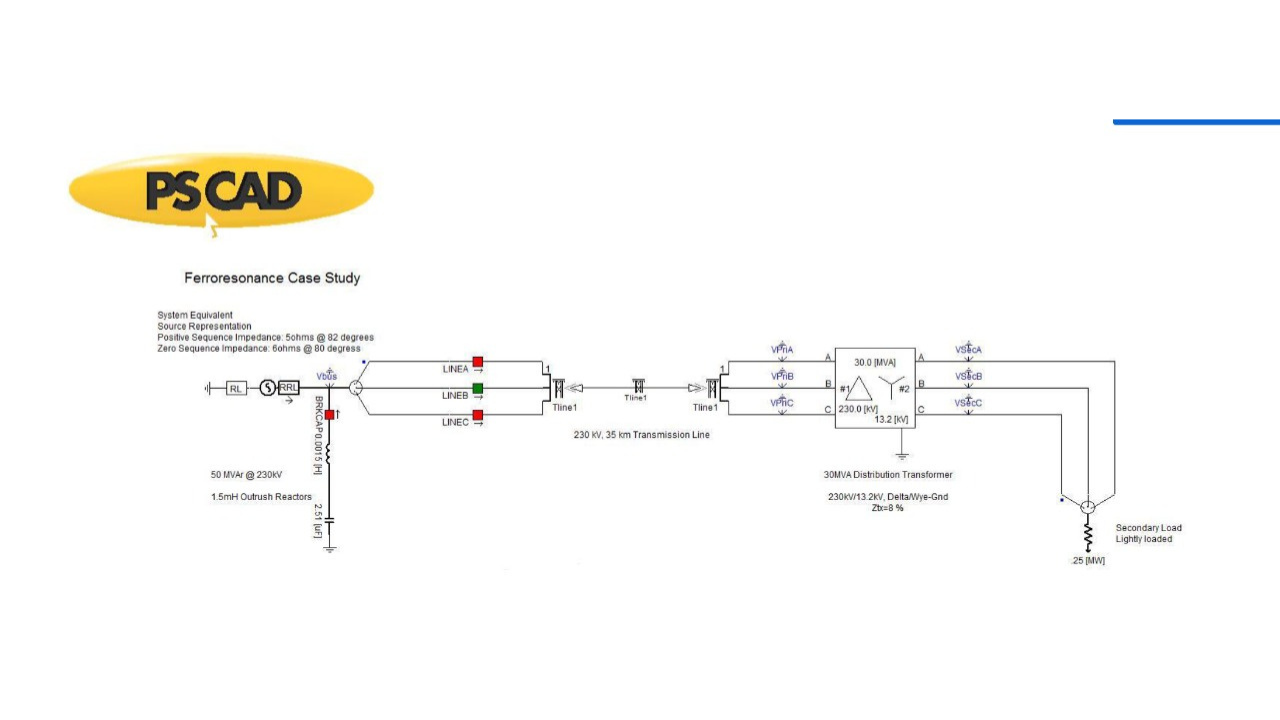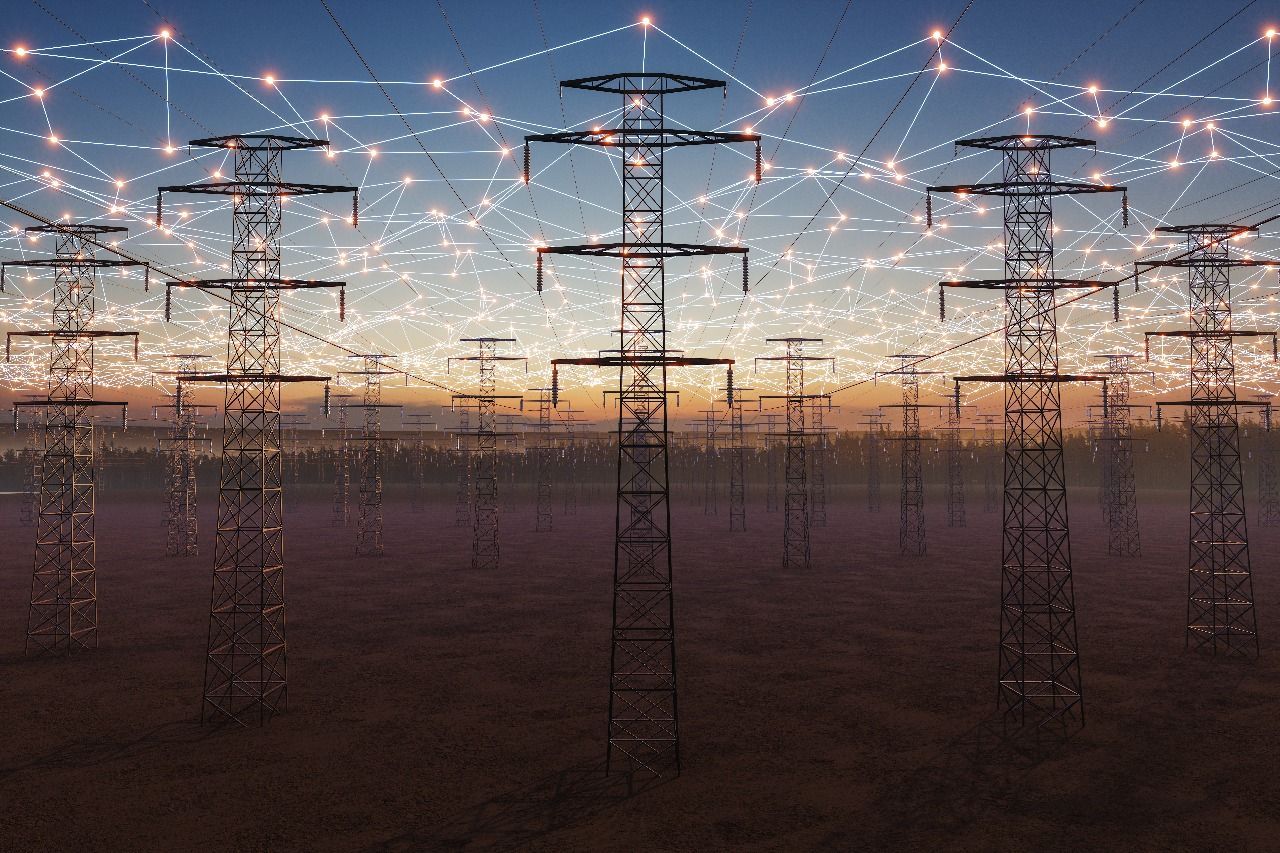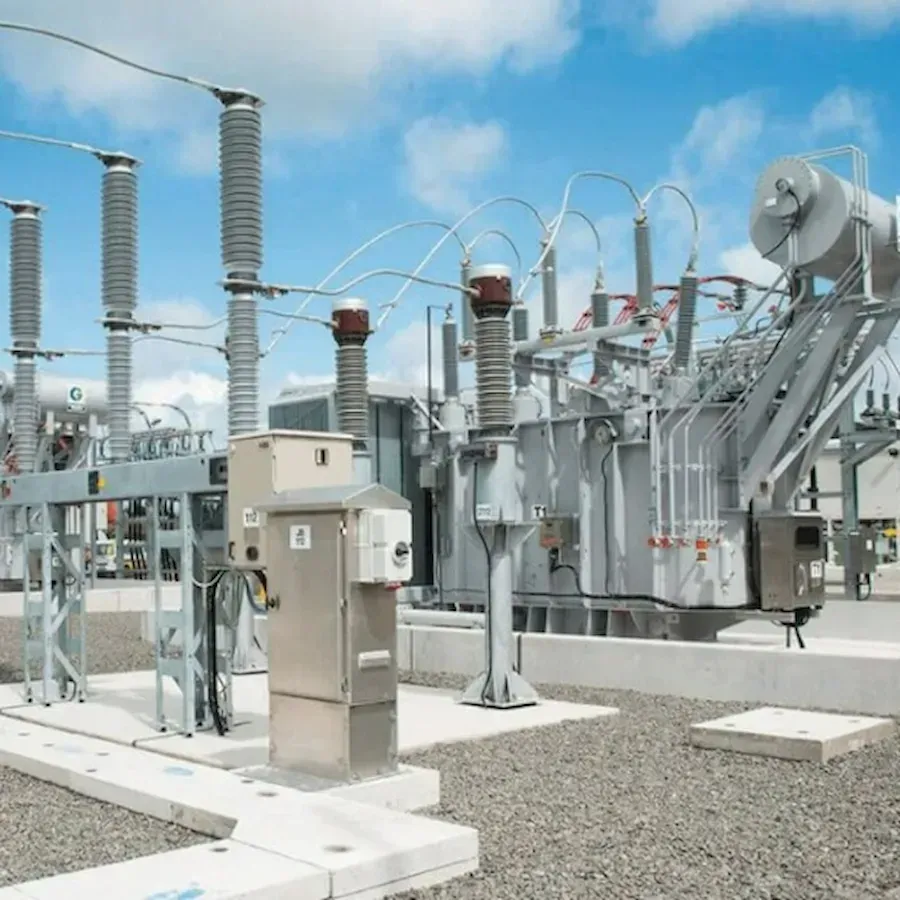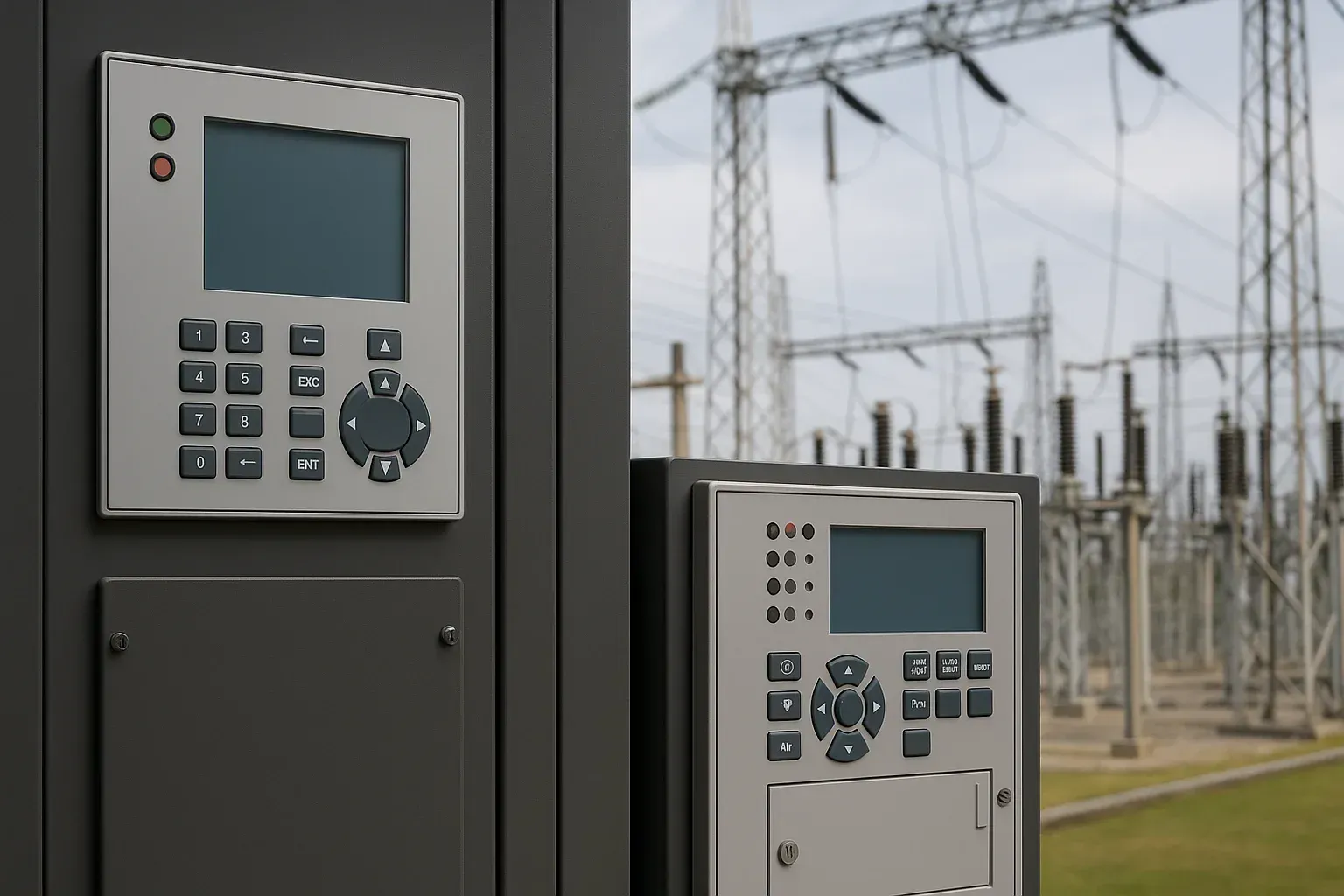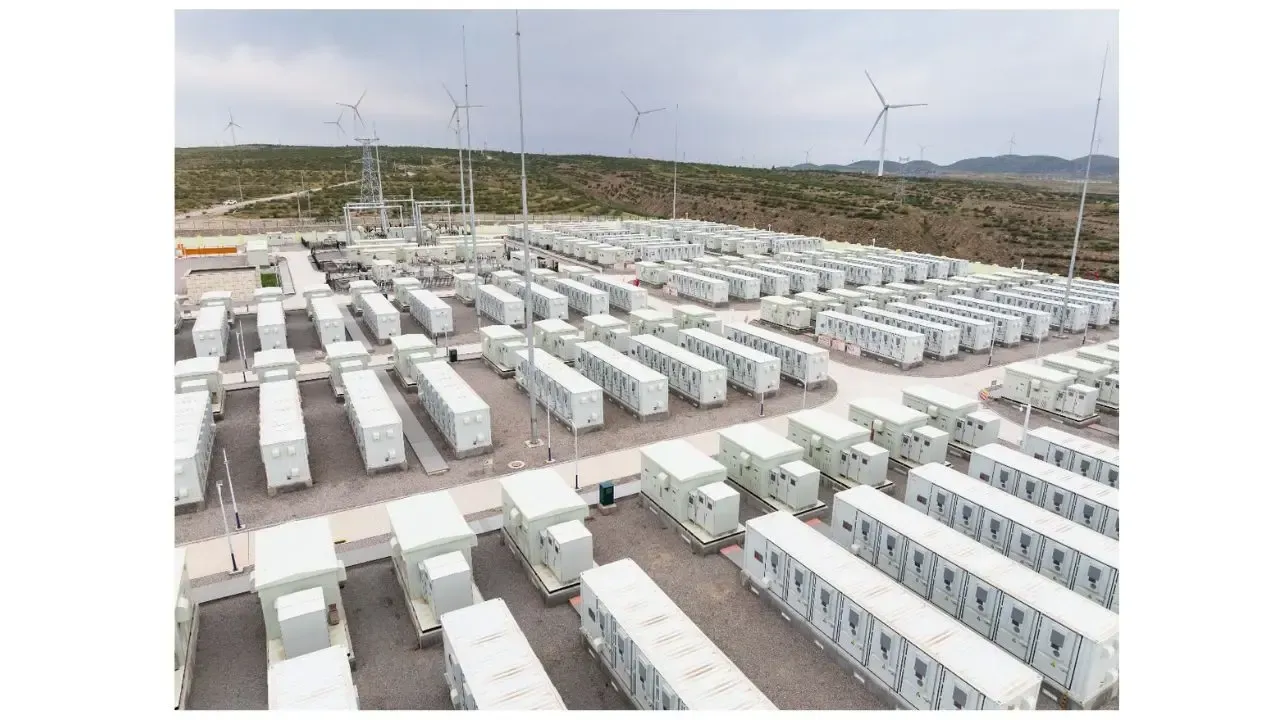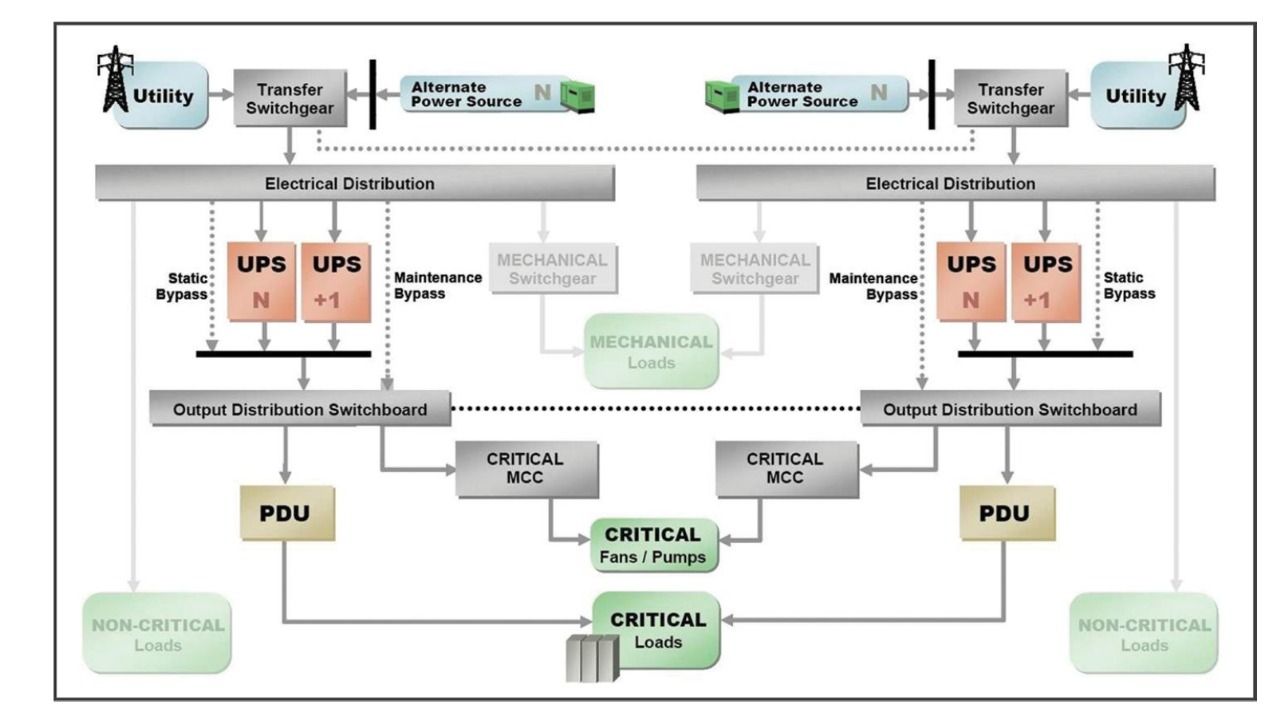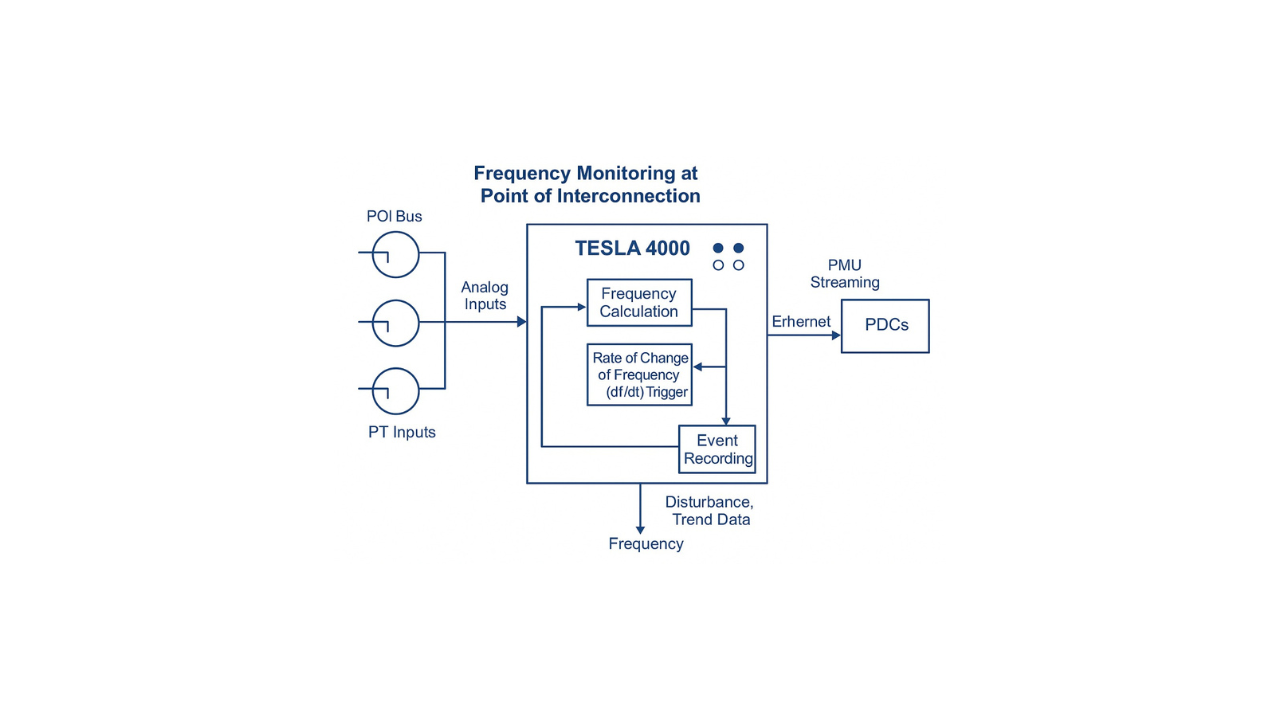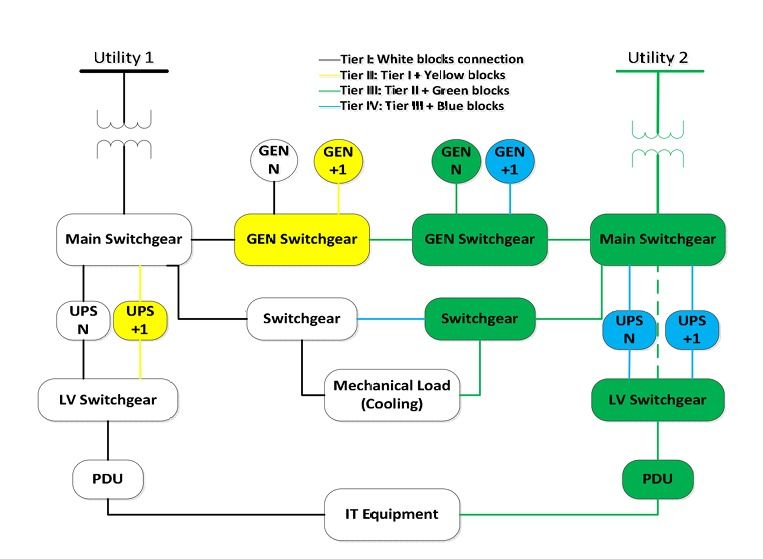A Coordinated Electric System Interconnection Review—the utility’s deep-dive on technical and cost impacts of your project.
Challenge: Frequent false tripping using conventional electromechanical relays
Solution: SEL-487E integration with multi-terminal differential protection and dynamic inrush restraint
Result: 90% reduction in false trips, saving over $250,000 in downtime
Understanding Ferroresonance in Power Systems – Risks, Simulation, and Mitigation
September 30, 2025 | Blog
Introduction: Ferroresonance in Power Systems
Ferroresonance is a nonlinear electrical phenomenon that poses a significant risk in medium- and high-voltage power systems. Unlike typical transient events that dampen quickly, ferroresonance can lead to sustained overvoltages capable of damaging transformers, breakers, and other critical equipment
At Keentel Engineering, we help utilities and developers evaluate and mitigate ferroresonance risks using advanced simulation tools like PSCAD/EMTDC. This ensures compliance, system resilience, and asset protection.
What is Ferroresonance?
Ferroresonance occurs when the nonlinear inductance of a saturable transformer interacts with system capacitances (such as those from transmission lines, breaker grading capacitors, or stray equipment capacitance). When resonance conditions are met at the system’s operating frequency, the result can be large currents and voltages, far exceeding design limits
Unlike simple resonance, ferroresonance is complicated by transformer core saturation, making it highly nonlinear and difficult to predict.
Need a study? Request a
PSCAD-based assessment today.
System Example
In the study presented, ferroresonance was triggered when one breaker in a three-phase system opened properly while two remained stuck. This created an LC loop, causing transformer saturation and runaway overvoltage conditions
- Without saturation modeled: The system showed normal switching waveforms.
- With saturation modeled: Voltages rose dramatically, up to 4 p.u. (per-unit), threatening insulation and equipment integrity (see simulation results on page 4 of the PDF).
Design it right the first time—talk to our
substation engineers.
Why Ferroresonance Matters
- Equipment Damage – Prolonged overvoltages can lead to transformer failure.
- Safety Risks – Stuck breakers or switching anomalies can trigger dangerous fault conditions.
- Reliability Concerns – Grid operators must account for ferroresonance in planning and operations.
At Keentel Engineering, our simulation studies provide insights into:
- Transformer saturation behavior
- The effect of load changes on ferroresonance
- System damping contributions from losses and connected equipment
Mitigation Strategies
Some approaches we recommend include:
- System Modeling & Simulation – Using PSCAD or EMT studies to predict conditions.
- Load Management – Adjusting transformer loading to reduce resonance risk.
- Damping Enhancements – Adding system losses or resistive paths.
- Design Modifications – Proper breaker coordination, surge arresters, or grounding strategies.
Conclusion
Ferroresonance is rare—but when it occurs, the consequences are severe: sustained overvoltages, insulation breakdown, and avoidable outages. The only reliable defense is proactive engineering: model the exact network (including transformer saturation), test credible switching scenarios, and implement damping, protection, and coordination measures before energization.
Keentel Engineering applies PSCAD/EMTDC studies and utility-grade practices to identify trigger conditions, quantify risk (e.g., p.u. overvoltage envelopes), and deliver clear mitigation options with implementation steps and protection setting guidance. Our work helps owners meet NERC/IEEE expectations while protecting critical assets and project timelines.
Frequently Asked Questions – Ferroresonance
1. What causes ferroresonance in power systems?
It occurs when a saturable transformer’s nonlinear inductance interacts with network capacitances under abnormal switching or breaker operations.
2. How is ferroresonance different from normal resonance?
Normal resonance is linear and predictable, while ferroresonance is nonlinear, often leading to sustained overvoltage due to transformer core saturation.
3. What are common system conditions that trigger ferroresonance?
- Stuck breaker poles during switching
- Lightly loaded transformers
- High system capacitance from long lines or grading capacitors
4. Why are detailed simulations necessary?
Because ferroresonance is nonlinear, its behavior cannot be easily predicted by simple calculations. Tools like PSCAD/EMTDC allow engineers to model transformer saturation and assess potential overvoltages.
5. What did the case study in the PSCAD Cookbook reveal?
That under breaker misoperation, voltages could rise to 4 p.u., showing the severity of ferroresonance if not mitigated
6. Can ferroresonance damage equipment?
Yes. Prolonged ferroresonance can cause insulation breakdown, transformer failure, and breaker damage.
7. How can ferroresonance be mitigated?
By careful system design, adding damping resistors, improving breaker coordination, and using surge arresters.
8. Does load affect ferroresonance behavior?
Yes. Changing load levels can damp or amplify ferroresonant oscillations
9. What role do system losses play?
Losses act as natural damping, reducing the severity of oscillations.
10. Why is ferroresonance more dangerous today?
Modern grids have higher penetration of nonlinear equipment, capacitor banks, and lightly loaded transformers, increasing the likelihood of ferroresonance.
IEEE PES TR 126 Design Support
Keentel Engineering Advantage: We bring decades of experience in power system studies, PSCAD simulations, and NERC/IEEE compliance. Our team ensures that ferroresonance risks are identified early in the design phase, saving utilities and developers from costly outages and equipment damage.

About the Author:
Sonny Patel P.E. EC
IEEE Senior Member
In 1995, Sandip (Sonny) R. Patel earned his Electrical Engineering degree from the University of Illinois, specializing in Electrical Engineering . But degrees don’t build legacies—action does. For three decades, he’s been shaping the future of engineering, not just as a licensed Professional Engineer across multiple states (Florida, California, New York, West Virginia, and Minnesota), but as a doer. A builder. A leader. Not just an engineer. A Licensed Electrical Contractor in Florida with an Unlimited EC license. Not just an executive. The founder and CEO of KEENTEL LLC—where expertise meets execution. Three decades. Multiple states. Endless impact.
Services

Let's Discuss Your Project
Let's book a call to discuss your electrical engineering project that we can help you with.

About the Author:
Sonny Patel P.E. EC
IEEE Senior Member
In 1995, Sandip (Sonny) R. Patel earned his Electrical Engineering degree from the University of Illinois, specializing in Electrical Engineering . But degrees don’t build legacies—action does. For three decades, he’s been shaping the future of engineering, not just as a licensed Professional Engineer across multiple states (Florida, California, New York, West Virginia, and Minnesota), but as a doer. A builder. A leader. Not just an engineer. A Licensed Electrical Contractor in Florida with an Unlimited EC license. Not just an executive. The founder and CEO of KEENTEL LLC—where expertise meets execution. Three decades. Multiple states. Endless impact.
Leave a Comment
We will get back to you as soon as possible.
Please try again later.

